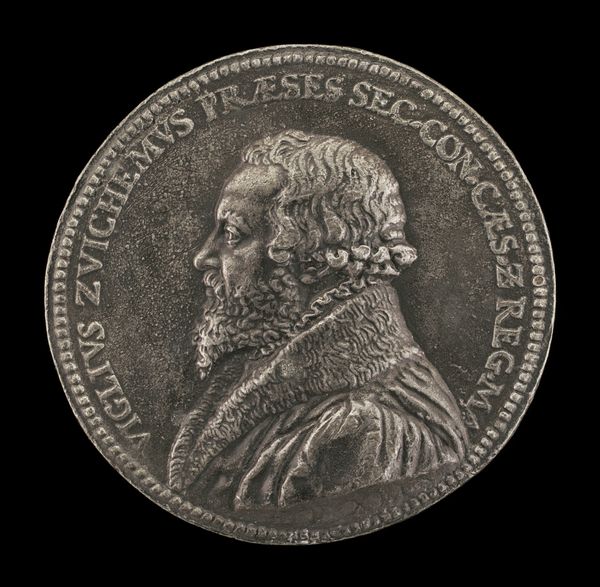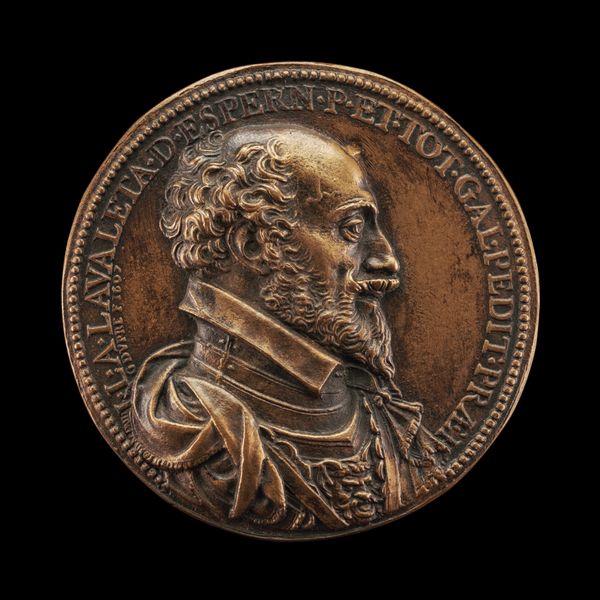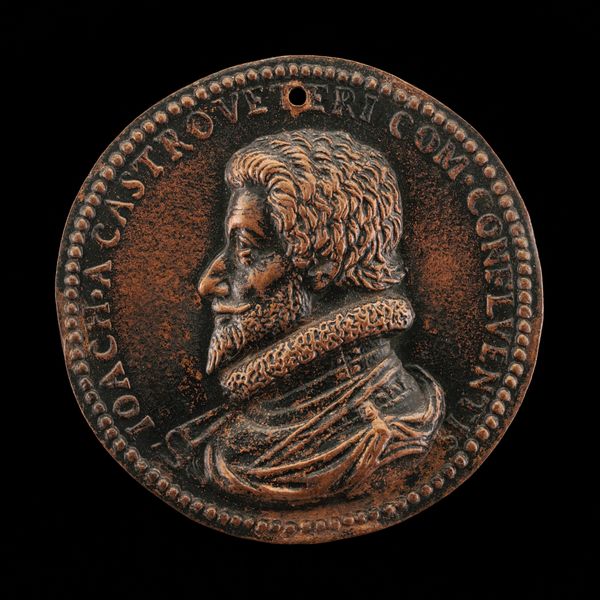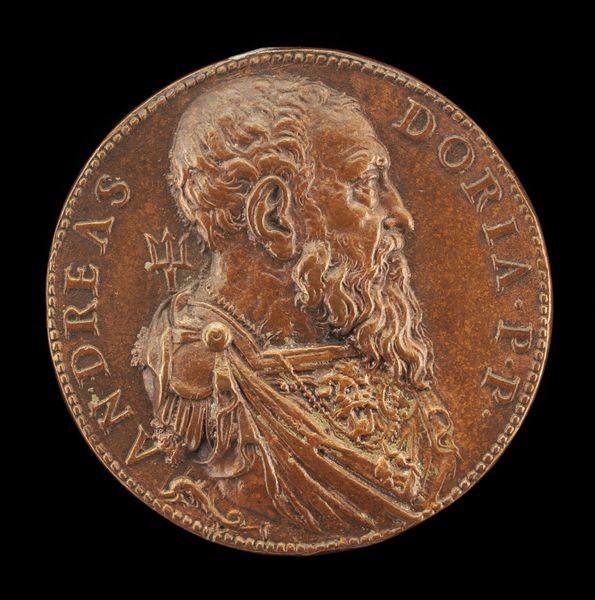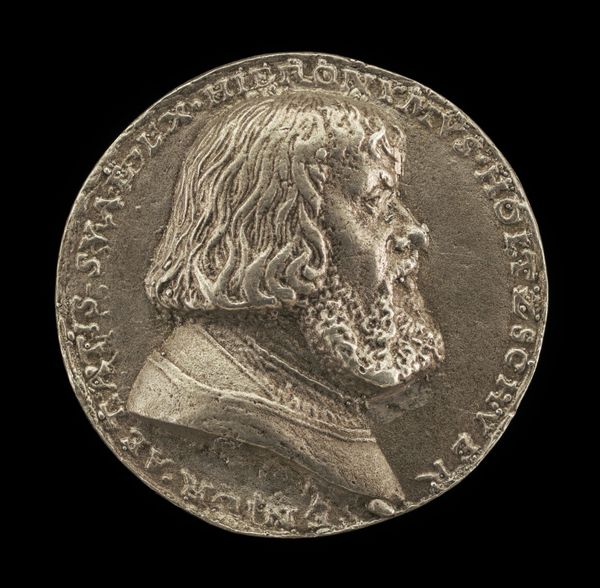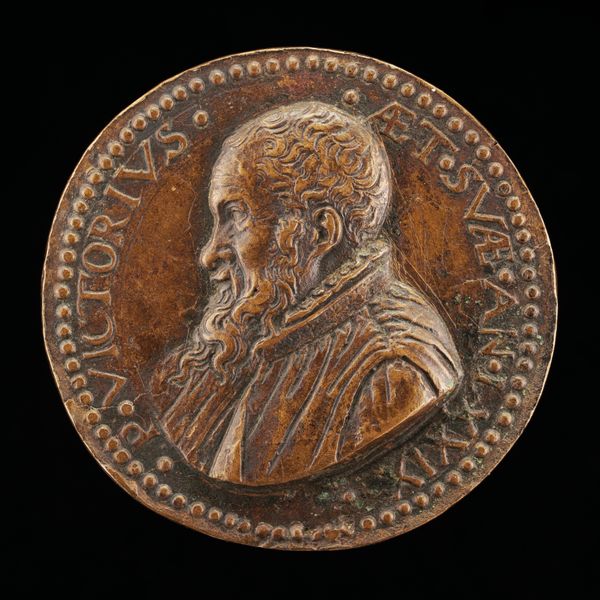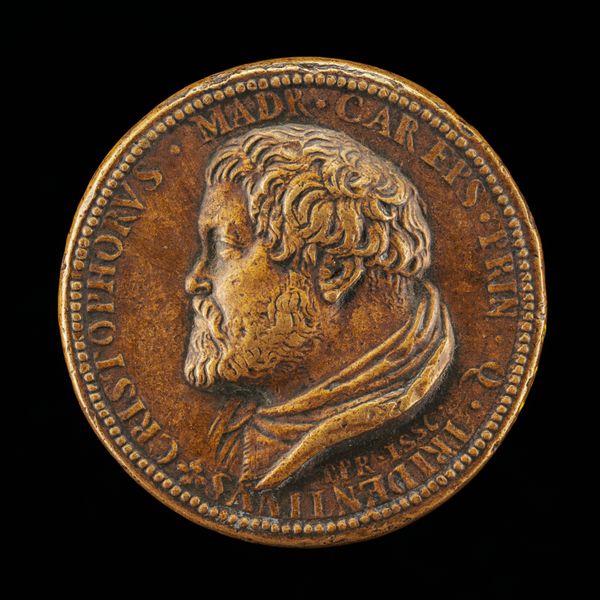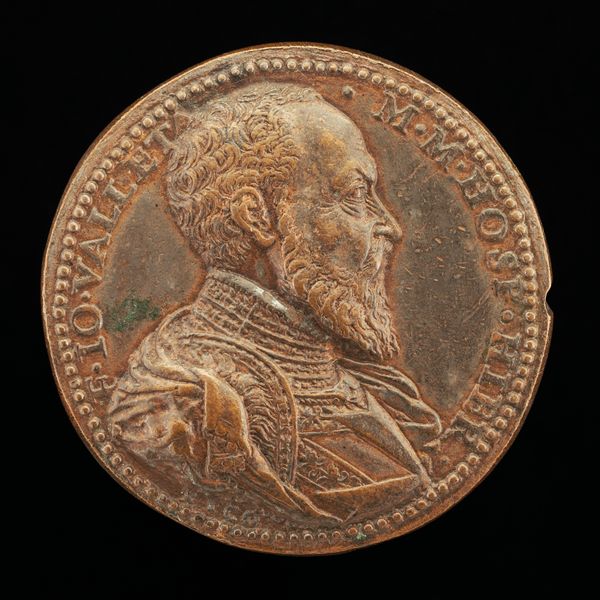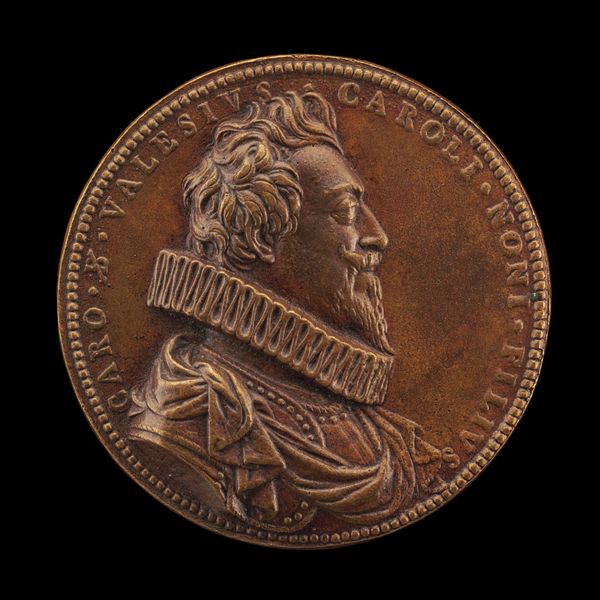![Viglius van Aytta of Zuichem, 1507-1577, Lawyer and Humanist [obverse] by Jacques Jonghelinck](/_next/image?url=https%3A%2F%2Fd2w8kbdekdi1gv.cloudfront.net%2FeyJidWNrZXQiOiAiYXJ0ZXJhLWltYWdlcy1idWNrZXQiLCAia2V5IjogImFydHdvcmtzL2FkNzYzOWViLTUyODYtNGFiNC1iMTliLTk1YTkwMTMwNGJhMy9hZDc2MzllYi01Mjg2LTRhYjQtYjE5Yi05NWE5MDEzMDRiYTNfZnVsbC5qcGciLCAiZWRpdHMiOiB7InJlc2l6ZSI6IHsid2lkdGgiOiAxOTIwLCAiaGVpZ2h0IjogMTkyMCwgImZpdCI6ICJpbnNpZGUifX19&w=3840&q=75)
Viglius van Aytta of Zuichem, 1507-1577, Lawyer and Humanist [obverse] 1571
0:00
0:00
metal, relief, sculpture
#
portrait
#
medal
#
metal
#
sculpture
#
relief
#
11_renaissance
#
sculpture
#
history-painting
#
miniature
Dimensions: overall (diameter): 4 cm (1 9/16 in.) gross weight: 20.39 gr (0.045 lb.) axis: 12:00
Copyright: National Gallery of Art: CC0 1.0
Curator: Let's discuss this intriguing portrait medal featuring Viglius van Aytta of Zuichem, a prominent 16th-century lawyer and humanist. Jacques Jonghelinck created this piece in 1571. It's quite striking. Editor: Indeed, it possesses a formidable gravitas. The man’s profile seems almost to emerge from the metal itself, his gaze fixed and determined. What can you tell us about the context of its production? Curator: These portrait medals, cast primarily in metal, were common among elites in the Renaissance. Jonghelinck, known for his work for the Spanish court, has clearly rendered Viglius with considerable skill. You can see his attention to the detail in the curls of his beard and the fur trim of his coat. Editor: And it is precisely these details that communicate so much. The meticulous rendering of the fur speaks to status, of course, but the carefully cultivated beard and flowing hair act almost as a visual manifesto of humanist ideals: intellect, wisdom, and a connection to the classical world, revived. Even the circular form itself feels significant. Curator: Interesting. Consider also the labour involved in producing such a refined object. The casting process itself would demand considerable expertise and access to materials. Who would have owned and displayed something like this, and how would they access such precious works? Editor: Ownership certainly signified status and intellectual affiliation. To wear it, display it, was a conscious alignment with those values of learning and discernment during a tumultuous time of Reformation and Counter-Reformation. There's such persuasive visual vocabulary at play here, subtly proclaiming humanist commitment through considered design and symbolism. Curator: Indeed. Medals such as these offered artists an opportunity to disseminate humanist thought and connect labor, commerce and intellectual history through metalwork production. Its small scale and use of repeating decorative motifs, moreover, speaks to something fundamentally democratic about artistic output during this era. Editor: A democratic output, perhaps, for those who had access to power. Ultimately, these details act as powerful cultural symbols, encapsulating layers of historical memory in miniature. This piece, regardless of medium, captures much more than just a likeness. Curator: I agree; analysing how such pieces circulated and the conditions in which craftspeople lived offers more expansive avenues of exploring visual production in 16th-century Europe.
Comments
No comments
Be the first to comment and join the conversation on the ultimate creative platform.
